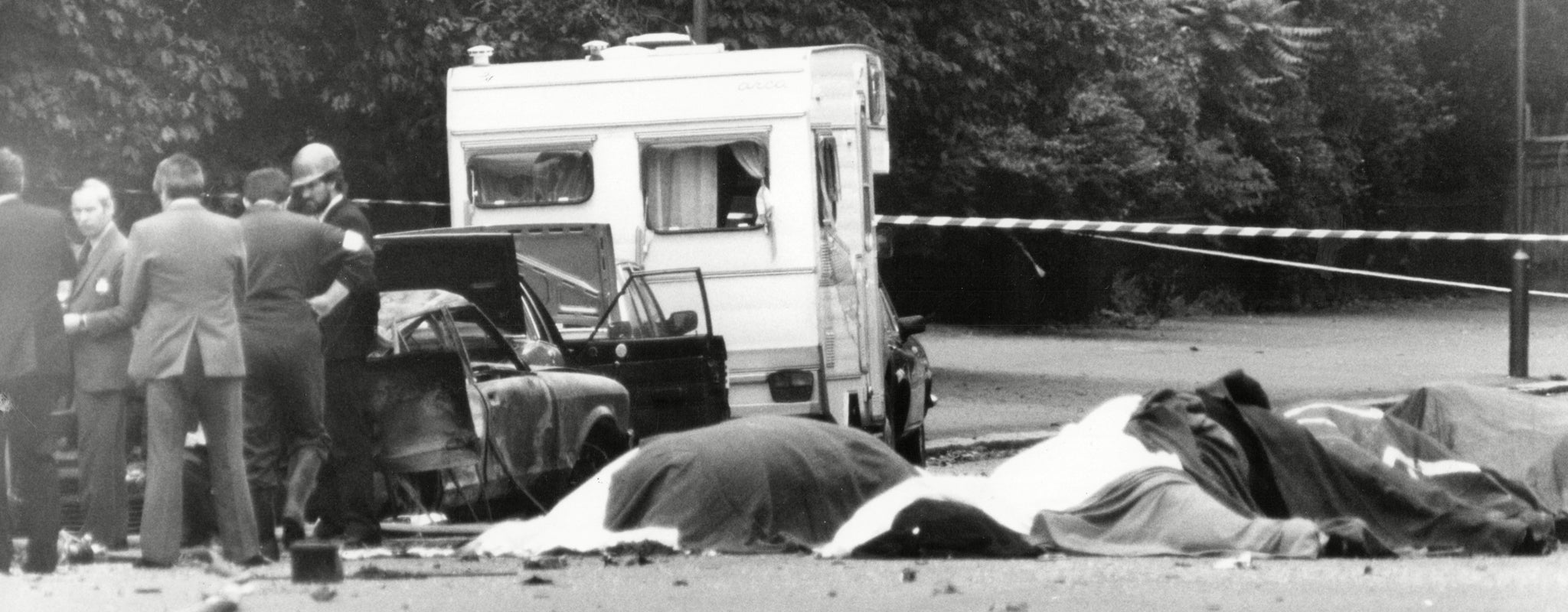61-year-old man charged with murdering four soldiers in 1982 Hyde Park IRA bombing
Blast hit Royal Household Cavalry, Blues and Royals, as they travelled on their daily route from their barracks to Buckingham Palace.

A 61-year-old Irishman was today charged with the murders of four members of the Royal Household Cavalry in the 1982 IRA Hyde Park bombing, the Crown Prosecution Service said.
John Anthony Downey will appear in court this afternoon accused of being responsible for a car bomb which killed members of the mounted unit as they rode from their barracks for the changing of the guard at Buckingham Palace. Seven horses were also killed.
A second device exploded beneath the bandstand in nearby Regents Park as members of the Royal Green Jackets played to a crowd of spectators less than two hours later. Mr Downey has not been charged in connection with that blast. A total of 11 people died in the bombings.
The charges follow a new inquiry by the Metropolitan Police into the attacks 31 years ago and his arrest on Sunday at Gatwick Airport.
Mr Downey, of County Donegal, was charged with the murders of Roy John Bright, Dennis Richard Anthony Daly, Simon Andrew Tipper and Geoffrey Vernon Young after a review by the CPS. He has also been charged with intending to cause an explosion likely to endanger life.
Sue Hemming, Head of Special Crime and Counter-Terrorism at the Crown Prosecution Service, said: “It is alleged that Downey is responsible for the improvised explosive device contained in a car parked in South Carriage Drive, SW1, London which resulted in the deaths of four members of the Royal Household Cavalry, Blues and Royals, as they travelled on their daily route from their barracks to Buckingham Palace.“
The IRA later admitted carrying out the attack. Mr Downey is due to appear at Westminster magistrates’ court this afternoon. “John Anthony Downey is now charged with criminal offences and has the right to a fair trial,” said Ms Hemming.
Danny McNamee was convicted in October 1987 of conspiring to cause explosions including making the Hyde Park bomb, based on fingerprints found on tape at two IRA arms dumps. He was freed after serving less than half of his 25-year sentence under the Good Friday agreement.
In 1998 his conviction was quashed at the High Court, after a high-profile campaign by celebrities including Eddie Izzard because of material that was not passed to his legal team. But although his conviction was ”unsafe“ it did not follow he was innocent of the crime, the judges said.
Sergeant Pedersen: Tragic end of man who survived the bombing
The life of the rider of Sefton, the Household Cavalry horse injured in an IRA bomb attack in London 31 years ago, ended in tragedy last year. Sergeant Michael Pedersen, 51, who survived the nail-bombing, murdered his two children before committing suicide.
Sgt Pedersen, who had complained of post-traumatic stress disorder, flew into a rage after seeing the mother of his children – Ben, 7, and Freya, 6 – from whom he had recently separated, kiss another man at a party.
In July 1982 Sgt Pedersen and 15 other soldiers were riding through Hyde Park to the Changing of the Guard when a car exploded, killing four soldiers and seven horses. Sgt Pedersen survived with his horse, Sefton, who sustained 34 wounds and needed eight hours of surgery. The pair became a symbol of the struggle against the IRA.
After serving 21 years in the army, Sgt Pedersen, known as Mick, worked as a lorry driver and ran a haulage firm with his wife, Erica, 43. But after their marriage broke up, he was served with an injunction banning him from the family home in Ashford, Middlesex, after he assaulted his wife.
Last summer, Mr Pedersen fatally stabbed both his children before turning the knife on himself.
Charlotte Philby
